Deena Metzger's Blog, page 3
July 15, 2024
Protecting the Heirloom Seeds of Consciousness
“In 1992, Frederick Turner translated a collection of poems by Miklós Radnóti, a Hungarian Jewish war poet… who was murdered by the Royal Hungarian Army during the Holocaust. Turner’s co-translator was Zsuzsanna Ozsváth, a Hungarian Jewish refugee who carried a volume of Radnóti’s poems in her winter-coat pocket in March 1957, when she fled from her parents’ home in Budapest and defected to the West following the defeat of the Hungarian Revolution of 1956. …Asked about the collection, Turner responded, “One day, one of Radnóti’s friends saw him on the streets of Budapest, and the poet was mumbling something like, ‘Du-duh-du-duh-du-duh,’ and his friend said, ‘Don’t you understand?! Hitler is invading Poland!’ And Radnóti supposedly answered, ‘Yes, but this is the only thing I have to fight with.’“
From Wikipedia, Frederick Turner, poet
At the last 19 Ways meetings and the last Daré we have been asking ourselves how we meet these extremely dark times, such as most living beings have never known. How do we begin? The first step, I think, is committing to a belief in a future. When we speak of it here on the land in Topanga, we say, ‘A viable future on behalf of all beings.’ Then, I am inspired by the implicit teachings of those rare beings, like Vivien Sansour, who are, under the most difficult circumstances, gathering heirloom seeds and by doing so posit a future.
“…biodiversity, which has kept us alive for millennia, is being threatened by policies that target farmers and force them to give up their heirloom seeds and adopt new varieties. Heirlooms, which have been carefully selected by our ancestors throughout thousands of years of research and imagination, form one of the last strongholds of resistance to the privatization of our life source: the seed. These seeds carry the DNA of our survival against a violent background that is seen across the hills and valleys through settlement and chemical input expansions.
“Heirloom seeds also tell us stories, connect us to our ancestral roots…. The Palestine Heirloom Seed Library (PHSL) is an attempt to recover these ancient seeds and their stories and put them back into people’s hands.”
Vivien Sansour, Palestine Heirloom Seed Library
 Photo by Maggie Tauranac
Photo by Maggie TauranacPoetry was the seed that Miklós Radnóti, carried against the forces of evil. It did not save his life, but it did add to the possibility of a future, our future now, eighty years later, when, tragically, fascism is rising again and more poetry is needed. But one seed, even that of poetry, is not enough, as it creates a mono-crop, which is the form of the dominant culture while biodiversity, and its equivalents are what are essential. Also diversity of all kinds depends on community and community on complexity, multiplicity, variation and distinctiveness.
For there to be a future, each of us must carry a particular seed. Which seeds will you carry and protect against the forces which threaten all life?
Let me paraphrase what Sansour teaches us:
Diversity which has kept us alive for millennia is being threatened by policies that force us to give up our values and adapt to commercial conventions, anti-democratic principles and technocracy. Our intrinsic values which have been carefully selected by our ancestors through thousands of years of research and imagination form the last strongholds against greed, power and domination that force us to give up our sacred ways of life These ways and stories carry the DNA of our survival, connecting us to our ancestral roots, strengthening us against colonization, against the pervading violent background.
 Photo credit unknown
Photo credit unknownAt Daré, the first person to speak said she would protect the seed of kindness. Such a seed is protected by being lived even as the seeds need to be sown and then gathered and sown and gathered to remain viable. She asserted she would live in the ways of kindness at every opportunity. We also understood that it is necessary to live according to the seeds we are protecting even, or especially, when threatened by the forces that undermine these ways. Another volunteered to protect generosity, another the ways of the mother, another non-violence. Another committed to the intelligence of the natural world, someone else to spiritual magic, another water, another to a piece of land to which he belongs. Another realizing that she embodies the DNA of a native people who were praised by Columbus to the King of Spain, and then entirely extinguished, vowed to find what she could of their ways and values and incorporate them into her life. Another devoted herself to the seeds of ceremony, another beauty. Another the Tree of Peace as lived by the Haudenausanee. And, I, of course, am devoted to preserving this land in Topanga and the wisdom of the 19 Ways. And so on…
These seeds together create a culture. Culture carried in community is what sustains us. Such a culture, of such seeds, generous, beautiful, kind, peaceful, devoted to protecting the natural world, etc. is the candle that shines in the dark. And when the wars are over, and the dark forces have self-destructed in the ways of supernovas, then the seeds can be brought out and sown, the cultures re-established as life forms, and we will remember, once again, how to live.
Thank you Vivien Sansour for your wisdom, devotion and guidance.
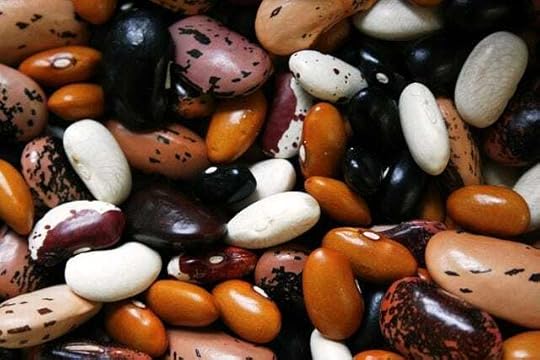 Photo credit unknown
Photo credit unknown
June 13, 2024
Leaving a Cruel Culture – For Annie
A friend asks me, What is the Story that needs to be told at this time?
Synchronicity. I glance over three letters in the mail today from strangers who each thank me for the ways we have interconnected in the past. Last night, a participant in my writing class read us a poem he had found in a book he had been gifted from the library of a friend after her death. An hour later, her photograph showed up on his random screen saver. It was W S Merwin’s amazing poem, Thanks, which ends
we are saying thank you faster and faster
with nobody listening we are saying thank you
thank you we are saying and waving
dark though it is.
and so I pay attention. One woman came to study with me 30 years ago and I never heard from her again. Now she is retiring from teaching and is writing a book: Tracking the Miraculous … “it’s focus is synchronicity…” she writes.
A second person writes me a long letter having discovered that the woman, who created this poster which has been hanging in his house for decades, is alive.
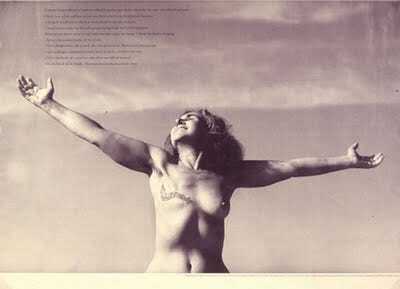
“It was always beautiful, “he says, “and life affirming.” I am glad he found something beautiful, whatever it was, for his 15,000+ word letter – “ I’ve enclosed some things about me mostly because, and despite my lack of happiness and success, it amuses me to have people read them and say to themselves, ‘who the hell has sent this – and why?’” – tells the heartbroken story of someone who has had a life of alienation and suffering. He wrote, “I have come to accept that I am alone in the world. There is no one who needs me to be alive.”
What is it in our culture that creates such loneliness? Why have we forgotten village and tribal life of mutual caring?
Another letter writer thanks me for an act of healing I extended to her, a stranger who was a friend of a friend. The writer had been suffering, so one extends what one can. I imagine that many acts of healing from others and her own efforts led to the note of thanks saying she is cancer free now. Why do we think that acts of kindness can’t be medicines?
As it happened, the extraordinary artist, Andrea Bowers, told me of her friend’s suffering; she is also the friend of the woman who wrote the new book, Tits Up, which the second writer read which introduced him to the poster. So we are all interconnected – if only we lived accordingly as do the trees and actually all the beings in the natural world as interconnection is its essence.
Letter writer 3 sent a gift, a film she had made in 2010, Kenneth Rexroth – The Signature of All Things. One former student who is missing from the film is Sam Hamill who, himself, became an extraordinary poet and founded Copper Canyon Press. Sam was my student, though he knew more about poetry than I did, through the accident of needing a degree when I was teaching creative writing at Los Angeles Valley College in 1966. He had learned so much of what he knew from the kindness, wisdom and poetry that Rexroth had extended to him when he returned broken to the US from the Vietnam war.
The Vietnam war broke Sam Hamill and poetry restored him. When we say the Vietnam war broke him, we mean this country, this culture, and our war obsessions, broke him. We mean cruel, munitions focused, money focused, privilege focused, domination focused cultural values that are disconnected from the natural world. These extremely individualistic values determine the way we live and devastate the earth, poison the waters, the soil and the air, and are leading us directly toward climate dissolution and extinction. You, who are reading this, know what I am talking about because you are watching with horror as I am what our government is supporting as the Israeli military cruelly slaughters the Palestinian people.
Today’s headlines:
“Israeli air strikes on a UN-operated school sheltering war-displaced Palestinians in central Gaza killed at least 33 people, including 12 women and children.” Israel’s army says Hamas fighters were also in the shelter.
“Dozens of people, including children, were slaughtered while they slept” at a UN school attacked by Israeli forces, Oxfam International says. “Israel’s Military Defends Strike on U.N. School Building, Saying Its Target Was 30 Militants. “Hamas and Islamic Jihad fighters were hiding inside three classrooms,” a military spokesman said.
Rexroth clearly understood the consequences of this culture as you can read in the Bad Old Days which have lead directly to these worsening current days, to times that are crueler and more dangerous than anything we have known, leading directly to extinction of the more than human and the human which looms ominously.
The Bad Old Days
By Kenneth Rexroth
The summer of nineteen eighteen
I read The Jungle and The
Research Magnificent. That fall
My father died and my aunt
Took me to Chicago to live.
The first thing I did was to take
A streetcar to the stockyards.
In the winter afternoon,
Gritty and fetid, I walked
Through the filthy snow, through the
Squalid streets, looking shyly
Into the people’s faces,
Those who were home in the daytime.
Debauched and exhausted faces,
Starved and looted brains, faces
Like the faces in the senile
And insane wards of charity
Hospitals. Predatory
Faces of little children.
Then as the soiled twilight darkened,
Under the green gas lamps, and the
Sputtering purple arc lamps,
The faces of the men coming
Home from work, some still alive with
The last pulse of hope or courage,
Some sly and bitter, some smart and
Silly, most of them already
Broken and empty, no life,
Only blinding tiredness, worse
Than any tired animal.
The sour smells of a thousand
Suppers of fried potatoes and
Fried cabbage bled into the street.
I was giddy and sick, and out
Of my misery I felt rising
A terrible anger and out
Of the anger, an absolute vow.
Today the evil is clean
And prosperous, but it is
Everywhere, you don’t have to
Take a streetcar to find it,
And it is the same evil.
And the misery, and the
Anger, and the vow are the same.
No surprise that Hamill influenced by such a soul teacher as Rexroth, organized Poets Against the War, and conducted a reading at the White House gates on February 12, 2003 in addition to arranging over 160 public readings in many different countries and almost all of the 50 states. He ultimately gathered the work of over 9,000 poets to oppose the war in Iraq.
When I awaken every morning, I check the news to see if we are still alive and if so, whether we still have a chance to change our ways of life that are so brutish and banal, with our stupefying celebratory culture and obsession with weaponry and power, the culture that justified Hiroshima and Nagasaki, that imagined Agent Orange, and – thank you, Google – which no doubt were responsible for the savage attack on the UN school last night, while we pretend to seek a cease-fire in order to seek votes. It is all so sordid. An AI funder, stated that he does not think humans will be annihilated by AI by 2030. But, he says, continuing his investments, 2060 is likely.
Gentle Boy, my beloved maybe wolf /Husky, calls me to the kitchen for his 6 o’clock snack. Ask anyone who knows him whether or not GB can tell time as he interrupts me whatever I am doing at 6 pm, or close enough, even accommodating the shift to Daylight Saving Time or the return to Pacific Standard Time. Animals are so much more intelligent than we have the capacity to understand.
I go to the kitchen, and look across the patio and the hills wild with golden sunflowers, and purple sage, where the beginning of the snake spirit of a white cloud creeps into the canyon, tender against the Santa Monica mountains still rising green this June. Such beauty. How do we preserve it?
Now, I return here and continue writing. Where are we? Oh yes, I am recounting reading the homicidal news each morning and my response which is imagining how I take another step out of the culture toward a life that honors the Earth first, and loves Life and cherishes it, and doesn’t murder or poison or destroy.
What is the Story that needs to be told at this time?
The Story that needs to be told is of the process of leaving this mercenary culture that entrains us toward destruction, that rapes the natural world and expresses unlimited violence toward all beings. The Story that needs to be told is the one of bearing witness to the horror and corruption of our history and these times and scrutinizing our lives accordingly. It is the Story of the long and exacting process of disengaging, consciously ceasing our involvement in what injures and destroys.
It is the Story of finding other beautiful ways. Imagine that we take the original dictum that once underlay true medicine – First, do no harm – as the direction for how we live each day. First do no harm. Then love life and the Earth immoderately and live accordingly. May we all live so there is a viable future for all beings.
And, oh yes, Thank you.
“thank you
thank you we are saying and waving
dark though it is.”
Is this Our Future? On Lavender and Where is Daddy
If you glance over the last year of essays I have written on SubStack, you will see those I wrote because I was/ am alarmed by AI and hoped we would find ways, yes, naively, hoped that despite all, we would find ways to stop AI before it stops us. But when I fell in alongside the rapid growth pattern of AI, I understood that what I hoped, and I was not the only one hoping or assuming, would not be fulfilled as it is taking a startlingly short time for AI to reach the ability to step out on its own, impersonate someone, take over an election, steal, abuse and kill because all that is required is the request by a human being and algorithms as it is becoming clear that there are no restraints on the human or the technology.
Even as I understood that AI could not be stopped in its development, and that it was clearly already out of our hands, I still hoped that we might somehow modify it or influence it by embedding ethical concerns into AI as it grew up, developed, matured and went out on its own. But this has also proved impossible. It has only taken one year and fifteen days to go from thinking AI could be stopped to recognizing it has run amuck.
On April 3, 2023, they admitted they had created , as the myth they cited advises. I was really hoping that we could begin, out of concern, no, out of awareness that we cannot survive unless Earth does, no, out of unimpeded, unlimited, unprecedented love for this awesomely beautiful and unimaginably intelligent planet, to embed ethical understanding and allegiance to the natural world into every aspect of AI so that it would be resonant with the deepest nature of all life, to embed so clear and unarguable an ethos that AI would incorporate a benevolent nature, would then, shall we say, be natural, would be another species sharing in and protecting the ecoheart of the planet.
Why not?
Really, why not?
But today, I see no likelihood of any limitation on those who want to use AI for their most dangerous and terrifying purposes enacted against humans and Earth and whose actions, without doubt, set a precedent for horrors to come. I learned this at a webinar, “In Context: Israel’s AI Warfare Tactics + Efforts to Halt Arms Transfers,” sponsored by the organization Just Vision and +972 the Israeli/Palestinian news journal which broke the story of Lavender
 Smoke rises after Israeli airstrikes in Beit Lahia, in the northern Gaza Strip, December 28, 2023. (Yonatan Sindel/Flash90)
Smoke rises after Israeli airstrikes in Beit Lahia, in the northern Gaza Strip, December 28, 2023. (Yonatan Sindel/Flash90)‘Lavender’: The AI machine directing Israel’s bombing spree in Gaza
The Israeli army has marked tens of thousands of Gazans as suspects for assassination, using an AI targeting system with little human oversight and a permissive policy for casualties…
“Where’s Daddy?” also revealed here for the first time, used specifically to track the targeted individuals and carry out bombings when they had entered their family’s residences.
***
Imagine this with me. Tens of thousands of alleged … terrorists?… tens of thousands of probably mostly innocent people, including journalists, are identified and targeted by an AI program, Lavender, assumed to be guilty and so tracked as they walk or drive home by a program called Where’s Daddy, which waits for these who were alone to enter their homes, apartment buildings or village complexes and only when the suspect, family and neighbors are gathered drops a (cheaper) dumb bomb by drone that kills them all.
Where does this software come from? Consider that employees of Google are claiming mental strain and illness as a result of working on such projects and have been arrested and fired for staging a sit-in protesting Google’s (with Amazon) 1.2 bn Cloud contract, Nimbus, with the Israeli government.
GABRIEL SCHUBINER “The campaign really is driven by worker concerns and worker needs around the ethical use of our labor, as well as the direct workplace concerns of the health and safety concerns around working at a company that is facilitating genocide.”
***
Some months ago, a Palestinian woman in Gaza asked if we could imagine that her daughter, 5 years old, might someday be one of the peacemakers. This week, she said that she and her daughter dared not go outside to look at the stars as any movement, even of their eyelids, could bring down a drone, a dumb bomb, and end their lives.
***
But dear friends, you know hope is indomitable. Still, it is not hope that matters but possibility and our devotion to it. We may not be able to alter or transform AI but we still have an obligation to Earth as long as we are alive. And to all life. Rather than focusing on AI, our commitment to living on behalf of all life at each moment may be the critical medicine. We are at a challenging threshold – we, all beings, human and more than human, will all survive into the future — or we will all die. Our fate may be decided by AI, but, also, it may be in our hands. Who is it who must embody the ethos that can save all life?
***
A friend, who is a musician, was attending a peace conference. One day, improvising on the piano, she was approached by one of the attendees. “You know,” he said, “If this music could be embedded in AI software it would take it right down.”
https://www.democracynow.org/2024/4/17/no_tech_for_apartheid_google_israel
April 22, 2024
When We Are In a War
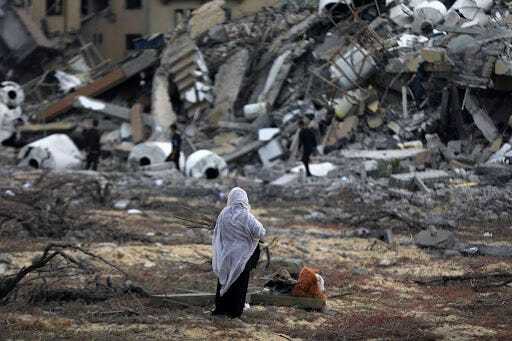 Palestinians collect remaining belongings from the rubble of destroyed houses after Israeli attack Gaza City, Gaza, on March 25, 2024. (Yasser Qudaih)
Palestinians collect remaining belongings from the rubble of destroyed houses after Israeli attack Gaza City, Gaza, on March 25, 2024. (Yasser Qudaih)Reading Jenny Erpenbeck’s remarkable novel, Kairos, I was struck by the moment when one of the characters was reading another’s Stasi records which were made available after the regime change that followed the Wall coming down between East and West Berlin on November 9th, 1989.
I had been in East Germany in April 1989 when I had made a pilgrimage to the Death Camps of Eastern Europe. We landed in Berlin and first visited Ravensbruck, the woman’s concentration camp which having been liberated by the Soviet Army remained in East Germany’s domain. Although the newspapers at that time were speaking of opposition to communism and the barbed wire delineating Hungary’s borders was being dismantled and repurposed on individual farms, and strikes and demonstrations were destabilizing Poland, the atmosphere was still very grim in East Berlin when we were there.
We had gone through Check Point Charlie and though it seemed impossible, a gray smog enveloped us as we walked to the nearby hotel, breathing air entirely different from the clear breaths we had taken the night before in a B&B art gallery in West Berlin, a very few miles away. From our hotel window, we watched a platoon of soldiers pass in front of the hotel on the hour.
We had been given the name of a friend of a friend and had brought a dozen jazz LPs which we gifted him after 10 pm at night, in an entirely open area in the middle of a very large park, where he hoped we would not see anyone spying on him and he could not be recorded without awareness. We asked if he thought the Wall was coming down in response to Gorbachev’s introducing perestroika and having stated that “there is no model of socialism to be imitated by all.” Our new friend did not answer, silently indicating that he was very pessimistic about the future. And then, the Wall did come down. But, I wonder, though scrutiny was not as sophisticated as it is now, were we observed after all? Are we noted in his Stasi records?
I am fascinated by the ability to read one’s own or others’ Stasi records made during the regime by the dreaded secret police. No surprise then that Erpenbeck’s novel should have taken me to Christa Wolf, the renowned, dissident writer, who when the Wall fell was confronted with her own Stasi record. In City of Angels, which documents nine months spent in Los Angeles, she speaks of learning that she had briefly been, as a student, an informant for the Stasi, had apparently, though she claimed she had not remembered, participated in a few conversations about colleagues and had given one written document before, seemingly, she had desisted; meanwhile her own surveillance was contained in 42 volumes. I wished I had been able to sit alongside her as she read through these notes, the record of the information she had given and the pages and pages of being observed by hosts of informers who the Stasi manipulated into such activities. But also, did she not exhibit extraordinary courage having been coerced into informing and then refusing to continue and then becoming a well known dissident writer?
A similar dossier, compiled by the Stasi on Timothy Garton Ash, The File, a young writer who had taken up residence in East Germany “to understand tyranny and freedom” and was writing for West German newspapers, “was a meticulous record of his life. Ash said, “For me, unlike for the Stasi, there is a very clear line between working secretly for a government and working (sometimes secretly) as a writer. … As the man from Speka, I was a spy for “intelligence,” in that older sense. A spy for the reader.”
Though I have obtained my own FBI records, my experience is not the same. The FBI records were essentially redacted, huge swaths of black covered almost every page. Names, places, anything that might identify the informants or reveal something about the FBI was withheld. Such was the same in the records a friend had requested about her father, who had been an FBI agent – very little revealed. The Stasi records, unlike the FBI, Freedom of Information Records, were complete and one could read what one had said, where one had been, who one was with, what they were wearing. Nothing and no one withheld, including comments, observations, impressions, details of all sorts. Even information about the informants and how they were recruited and controlled. Ultimately, my files only confirmed what I had suspected, that the police had followed me when I was suing the Board of Education for my job after being fired from a tenured teaching position for teaching an English unit on censorship, pornography and propaganda, and using a poem I had written to illustrate the significance of intent in literature, then bringing the student’s attention to another aspect of intent by focusing on sexual innuendo in advertising. Several years later, they had recorded my travels to Cuba and back. This was not news to me. I was not surprised by my files and how impersonal they were and the extent of the redaction. The Stassi files were revealed to serve the people after a Europe wide ‘velvet’ revolution while the FBI (and CIA) files are revealed reluctantly and are highly censored. The American agencies are still operative and do not want their internal structures and working mechanisms revealed. But what becomes clear is that every form of surveillance, the intimate and the dispassionate, is its own version of sinister.
Knowing it is occurring, knowing its implications and dangers, also asks us to consider how we will act, even so. These files ask us to ask what we would do under dangerous conditions when we are forced to choose between our deepest values and ethical beliefs and our own welfare, perhaps even survival, and / or discomfort in disrupting our familial arrangements, or maybe even something less ominous, an unwillingness to disturb our comfort zone.
In the last years, I have wondered increasingly how those living in Germany under Hitler and Nazi rule lived with what they knew was occurring to political prisoners, Roma people, homosexuals, mentally challenged people and Jews. How was it possible to look away or to cooperate? I wonder this as I see the direction this country is going having to tolerate book banning, violent responses to different sexual orientations, government control of women’s bodies, alarming curriculum restrictions from primary schools through universities, extreme violence through access to military weapons, and racism and prejudices of all sorts seeping from the unconscious of the citizenry into all aspects of government. Such conditions preceded the rise of fascism in Germany and and are recurring to one extreme or another across the globe. As if a plague. As if a virus. Jack Forbes an Indigenous scholar wrote a book, Columbus and Other Cannibals, in which he identified such a virus – he called it Wetiko. If you haven’t read the book, you probably want to, but perhaps you can imagine some of his analysis from the title.
A common phrase: We don’t know, do we, how we will act under such circumstances…? For some the restraints are economic, for some they are relational, for some fear and for some disinterest, obliviousness…
We don’t know, do we, how we will act under such circumstances…. and anyway … it can’t happen here, right?
I look back on my Facebook postings, and see that the first call for a ceasefire was on October 9, 2023, as Israel’s response to the horrific massacre was already looming as extreme. These photos appeared in the Israeli publication, +972, written by Israelis and Palestinians, started by Michal Omer-man. They knew what was coming; we knew what was coming. Asking for a ceasefire was considered extreme and so the slaughter has been on-going as we continue to send munitions — (Today the Biden Administration authorized the transfer to Israel of 2000 lb bombs and other weapons. Washington Post.)
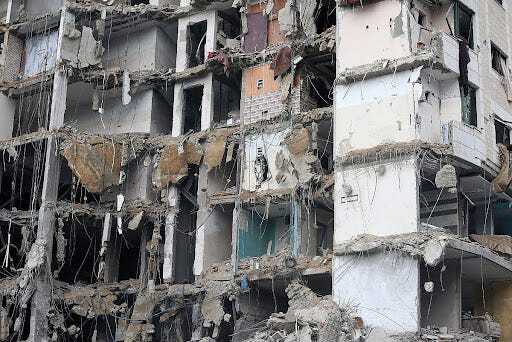 The aftermath of an Israeli air strike on the Rimal neighborhood of Gaza City, Gaza, October 10, 2023. (Mohammed Zaanoun)
The aftermath of an Israeli air strike on the Rimal neighborhood of Gaza City, Gaza, October 10, 2023. (Mohammed Zaanoun)
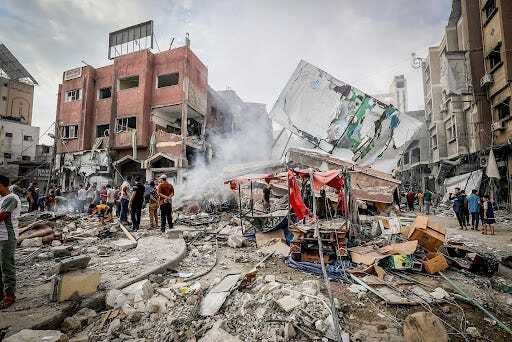 Palestinians search the Khan Yunis municipality building after an Israeli air strike, Gaza Strip, October 10 2023. (Abed Rahim Khatib/Flash90)
Palestinians search the Khan Yunis municipality building after an Israeli air strike, Gaza Strip, October 10 2023. (Abed Rahim Khatib/Flash90)
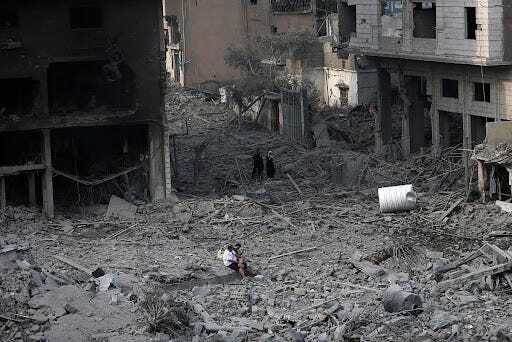 Palestinians inspect the massive destruction caused by Israeli airstrikes in Gaza City’s Al-Rimal district, October 10, 2023. (Mohammed Zaanoun)
Palestinians inspect the massive destruction caused by Israeli airstrikes in Gaza City’s Al-Rimal district, October 10, 2023. (Mohammed Zaanoun)This month I met someone whose grandfather’s company significantly supported Hitler’s war effort. A subcamp of the concentration camp was set up on the premises. “But,” the man said, “my grandfather was not a Nazi. He didn’t join the Party.” What was I as a Jewish woman whose father lost most of his family in the Holocaust to understand or feel?
There is frequently great anger and outrage when our behavior is compared to Nazi Germany in World War II. But, no less than 32,552 Palestinians have been killed and 74,980 wounded in Israeli attacks on Gaza since October 7. Attacks take place regularly at hospitals. Children are dying of imposed starvation. Aid vehicles are being attacked as as the hungry gather for the possibility of food rations. This horror is a consequence of the actions of the Israeli government, aided, abetted and militarily supplied by the US government. We are, I am, responsible.
I note my anxiety in writing this essay. It is my habit to write and rewrite obsessively, But, I wonder, is this more intense pattern I am observing today related to my unease in comparing our ways with Hitler’s ways and in writing these next words which have also been forbidden? I am hardly the only one to say this, people are in the streets, finally, saying this, but that does not make it easier. These words are taboo but if we allow the circumstances to continue unnamed they will be normalized and the world will suffer and decline inordinately because of our silence.
And so I say it with a broken heart – The war against the Gazans is committing genocide.
You understand, this is not said as an attack, this is said to stop it.
I want to note: Annelle Sheline and Josh Paul of the State Department have resigned over Gaza. Thank you.When we look closely at the photos from October and the introductory photo from this March, we see that such is continuing to this day and understand that the war is also committing ecocide as do all contemporary wars. Grievously, we are not reigning in our ability to destroy Earth.
In Jenny Erpenbeck’s novel, Kairos, the actions of the state and the intimate actions between the two lovers ultimately mirror each other. When we get to the end, we understand that the thrust of the entire book is to reveal this pattern between the two. As I think about it, this is something of what I hoped to communicate in my essay, Personal Disarmament, Negotiating With the Inner Government, Tree, Essays and Pieces. We can not separate how we govern from who we are, nor who we are from how we govern. We are a reflection of the State, but the State is also a reflection of us. The divide we hope exists, against which we build a Wall, has no validity.
The moral harm that we and war are creating has no bounds. There is no future if we continue in this way.
I am so sorry – I say, hopelessly – to our descendants.
***
Please join us for the 25th Writers’ Intensive May 25-31 On the Land and On Zoom These times: Chaos and collapse cannot be dismissed — and at the same time, we detect undeniable spiritual presences, complex communications from more than humans and moments of heart rending beauty. A small circle of gifted and exceptional individuals, devoted to their writing, recognizing the dire conditions afflicting all living beings and thinking deeply about literature and how writing can serve these times and the future, will gather both on the land in Topanga, CA as well as on Zoom and form an intimate and conscious community
Please email Sarah at deenasassistant1222@gmail.com for more information.
February 6, 2024
A Stubborn and Luminous Mystery : The Spiritual Lives of Animals
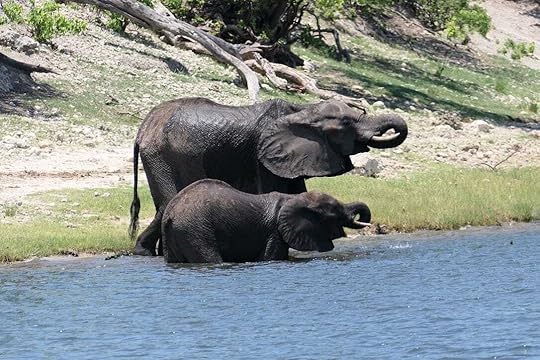
In December 2023, I returned to the wild, to Chobe National Park in Botswana for the ninth time in twenty-five years, companioned on six of those journey by my dear friend, writer and founder of everyday gandhis, Cynthia Travis, because we are obligated to a mystery. Indigenous peoples understand that while dreams land on a person, they are intended for the community, to teach, inform, warn, alert us so that we live in the right ways. The same is true for Story. Sometimes we are called to live a Story, a cosmic action which alters and altars (sic) us individually but as it is an event or several occurrences, it draws the community into it as well through the imagination and we all learn to live accordingly.
This mystery began on Epiphany, January 6th 1999 and repeated again and again through December 2023. Worlds intersected in incomprehensible ways through the actions of two species, the human and the more than human, the Elephant. Many of you know the beginning of this story and the events that followed, each time more enigmatic and baffling than the times before. (To review the story through 2017, it can be accessed as a and as a talk on YouTube.)
Cynthia and I arrived at Chobe National Park in the afternoon on early December 2023 and were greeted near the entrance by Elephants as we have been in the past; this was not unusual.

We had returned to Chobe to engage with the Ambassador or whoever was designated for such an interaction in whatever way it would occur about which we had no control. However, over the years, it turned out that such an incident would regularly occur at Chobe at the same place, at the the last hour of the last day we were in the area and so we played our part by returning to the Chapungu tree where a Fisher Eagle had landed on 1/6/99 to indicate where we were to wait for a meeting. It was not a matter of seeing Elephants or being in their vicinity, which were in themselves precious events, but to be available to interact with or receive a specific communication from the Elephant or the herd.
Early on the second morning, we took a boat along the Chobe river where we enjoyed watching the Elephants bathe.
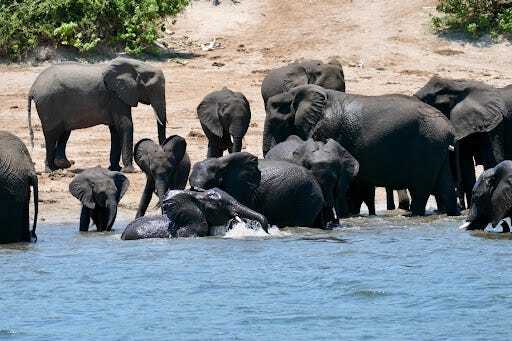
We went to the tree the second afternoon and greeted the abundance of animals there but again nothing out of the ordinary in relationship to us in particular occurred. Still being able to see the animals in the ways they live their lives was thrilling for us.
Over the three weeks, Cynthia and I had similar responses to this trip to Africa. We became hyper aware of patterns and resonances, the exquisite ways that animals move together without saying a word. We began puzzling the repetition in different forms of the equivalent of the murmuration of starlings, who in an instant form a moving cloud of beauty as they swirl in curves and spirals and then as startlingly become still again. Every species, it seemed, carries the intelligence of precise alignment, from the hunting postures of the Lions,
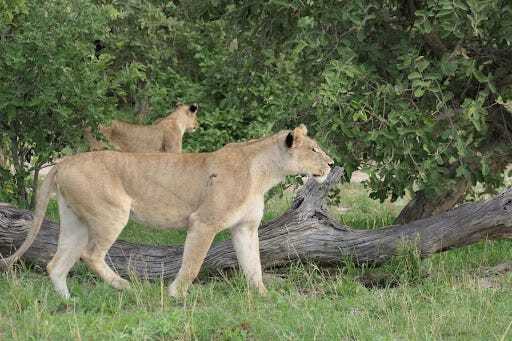
to the coordinated attack of wild dogs,
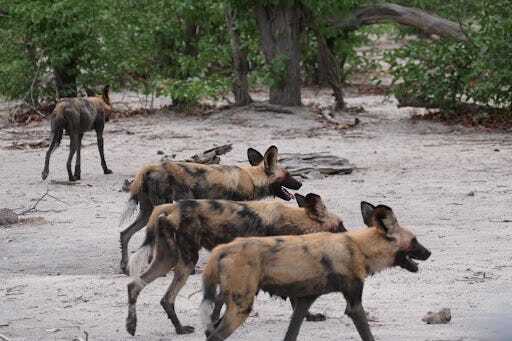
or the precise movements of a herd of zebra accented by the correlation of their stripes.
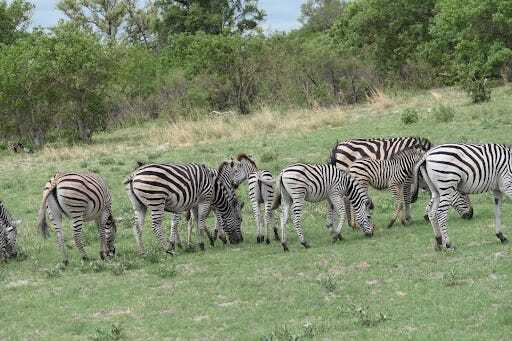
We had been brought to Paradise. While the wild is commonly associated with brutality and chaos – undoubtedly our own projections — we saw deep calm, cooperation, and multiple expressions of friendship and affection. We had seen this before but it had never been so clear and ubiquitous.
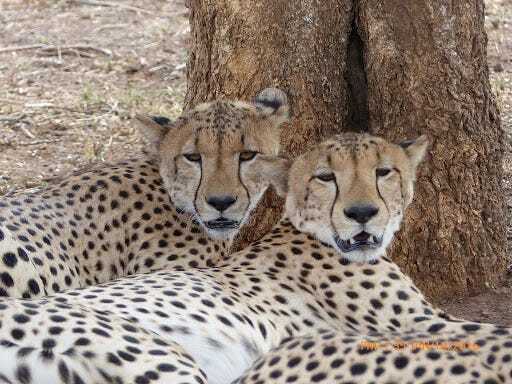
It was the very beginning of the rainy season. Within hours of the first rains, the fields of golden and yellow grasses were interlaced with various shades of new green
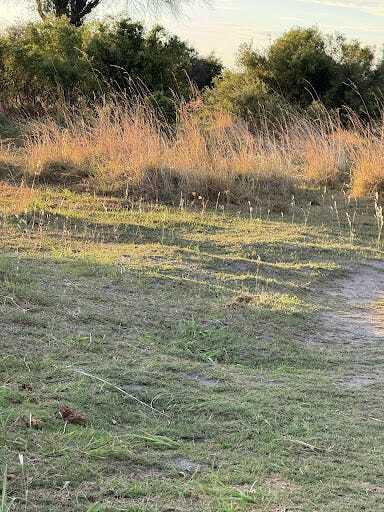
and the sky declared the revitalization in its own language:
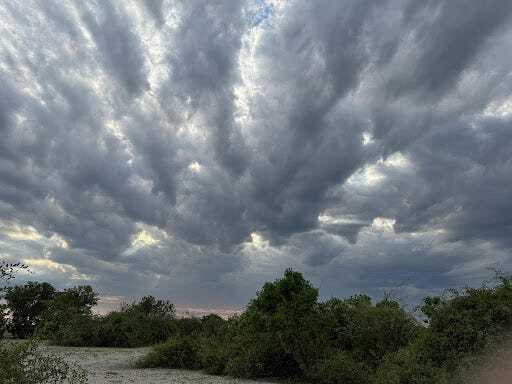
Yes, we were in Paradise but had come there from the savagery and shambles of contemporary life on this planet. So aware and broken by the violence of urban squalor, industrialization and pollution that has become commonplace in our world, we were gratefully awed by the fluorescence of life,
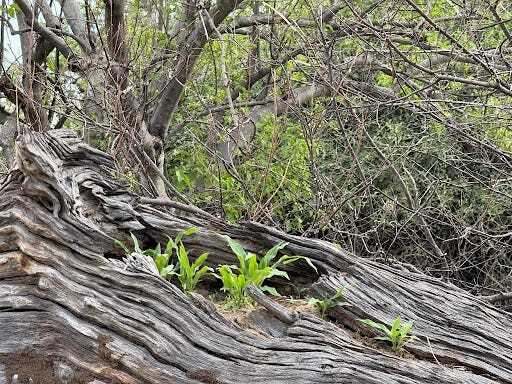
as well as the arms of death,
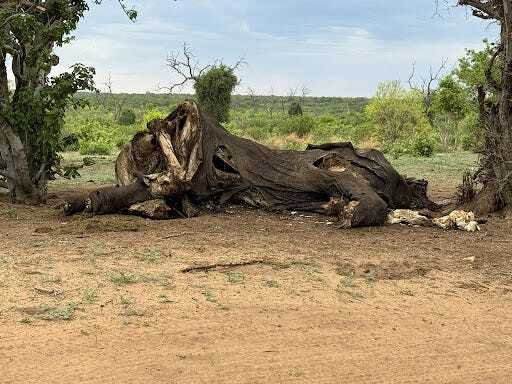
and the intrinsic beauty of its commonplace occurrences.
Still the splendor and grace of our surroundings had their drawbacks. It was 105°, the highest temperatures recorded in Botswana in December. The rapid decline of our climate was obvious even here where human incursion is limited. On the one hand, it was early summer in southern Africa, and we were able to witness the hidden passions of Leopards and the wildly dramatic urgency of Lions procreating
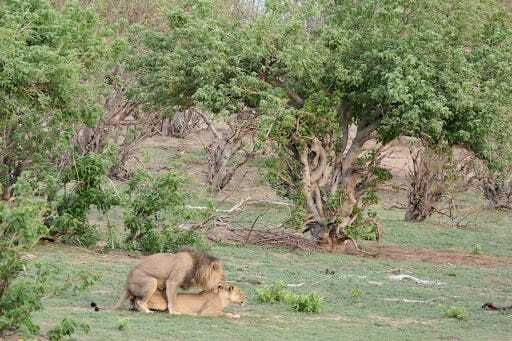
and there were little ones everywhere, Lion cubs and tiny day old Elephant calves following their herds under their mothers massive legs. On the other hand, checking into the news after dinner, I was aware of the continuous unspeakable bombardment and destruction of Gaza and her people. Paradise and Hell, day after day. Paradise, the realm of the natural world and Hell, the territory of the human.
On the third day, the last day we would be in Chobe, we waited at the Chapungu tree until we had to leave in accord with the Park’s regulation. It was a rainy day. We didn’t expect the Elephants to come for there was no reason for them to make the long trek to the river when it was cooler in the Mopane woodland where they slept and the dry pans had filled rapidly with enough water for them to drink and splash. Still, on eight different occasions at Chobe and nineteen distinct occasions all in all, in the wild of four different countries, at six different preserves, individual Elephants or herds had initiated resonant narrative encounters on the last hour of the last day we would be in that territory. We had come from California to Chobe as a sacred responsibility, a moral imperative to appear because we believed we had been summoned to testify to the reality of the repeated magic of communication across time, space, language and species.
Now for the first time, we hadn’t interacted. Though I hoped we might still have such encounters as we had in the past in other places, I was disappointed and mystified. Was there another meaning to be gleaned from our lack of engagement? Of course, I was so grateful for the utter beauty and surprise of what we had already seen. And for Paradise. It occurred to us that this was the purpose of this visit. That we would see Paradise, the way it had been, so as to teach us what might still be possible and to reveal the patterns and laws that were basic to it.
The next day, the guide from our Lodge surprised us by offering a short boat ride before breakfast and our ride to the helicopter. It was a cold, gray morning, still and quiet, with intermittent rain. There were very few animals at the river, a crocodile, an Eagle, and for a long time we saw no Elephants at all and then a few came to the water but left quickly. We went to the far bend where they often accumulate in massive herds and it was empty and we turned around toward the Lodge.
Various news items the night before had preoccupied me with concerns about AI and how it could affect the natural world. My own research and studies had left me greatly alarmed and new fears were arising in me that morning. I borrowed some paper to make some notes that felt urgent. Was it strategic to keep challenging AI or would it be more effective to find ways of mitigation so that it didn’t do great harm, that is, as much harm as was probable without any intervention.
At the instant I was thinking about ethics, I was startled to see a herd of Elephants speeding wildly down the hill we were approaching. They entered the river together in a single line parallel to the shore, bulls, matriarchs, males and females, old, young, babies, each aligned with the other, dipping their trunks and tusks into the water in synchronous notion.

Five minutes from the Lodge, we stopped and watched disbelieving and entranced by the coordinated dance of the gray bodies bending and rising. We were in the presence of the holy. There was no other way to envisage their sudden dramatic appearance. Something was being communicated. But what? Then we had to go on. There was no way we could linger. The moment we knew we had to leave, the entire herd turned in one motion and aligned themselves with their backs to us. Then they began to climb the hill again in a single line and when the elders reached the summit, they emitted three loud trumpet calls and disappeared.
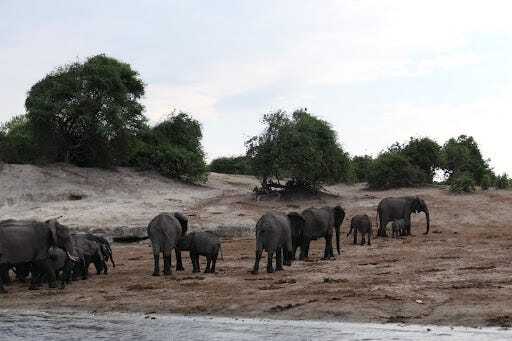
There was no doubt that on the last moment, indeed, of the last day, which we had not calculated, the Elephants approached and confirmed that we were involved in a spiritual event as profound as any I have ever known. We were in their hands, so to speak, and in the hands of spirit.
***
Four questions repeated and repeated for the next weeks and stay with me now:
How is this possible?
What does it imply?
What does it ask of us?
How are we to meet it?
***
This was not the only clear effort at communication from the Elephants on this journey. As in the past there were events at each of the other Lodges we had visited and they also conformed to the pattern of the last minute of the last day.
In 201l, Krystyna Jurzykowski, of Fossil Rim Wildlife Center and the High Hope retreat center, and I had been prevented from leaving Chobe when Elephants blocked the road after a violent incident by another driver that looked like it would end in injury for both species. When they closed the road for us, we turned off the key and yielded to whatever they would demand. After a short time, they let us pass. We had been tested and we had passed the test.
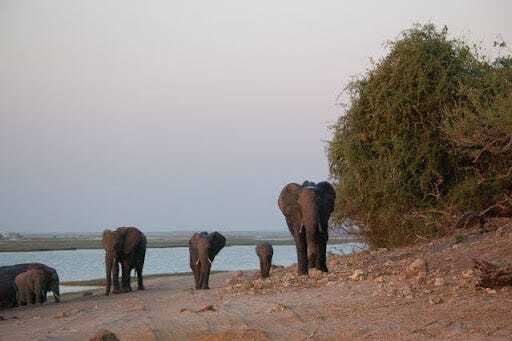
Remembering this image, I was startled when we were leaving the river the last full day we would be in Vumbura, Botswana and Elephants blocked the road in this way.
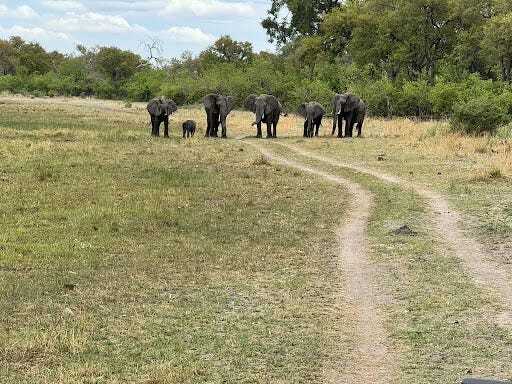
This undeniable reference to another event unites the many occasions into one since the years of contact beginning in 1999. Though I had originally thought it was my idea to sit in council with Elephants, to make contact with them, it is more likely that the Elephants so greatly endangered by poaching, agriculture expansion and habitat limitations had sent signals calling out for assistance and I happened to be one of those who perceived the call and responded. Afterwards, perhaps they ‘had my number,’ and a relationship between us began.
Because of a historical memoir Cynthia Travis is writing, her focus was also on Lions. Perceiving this may have been all that the Lions needed to allow us to come into their presence or to come into ours as they did. We came upon Lions and Elephants every time we went on a game drive but still we were astonished on leaving the Okavango Delta for the plane to Johannesburg to return to the States that a pack of Lions were blocking the road. I had in my mind already said good-bye to the Elephants and so I was further astounded afterwards at what was clearly the very last moment of the very day on Safari to come upon an Elephant herd navigating a small stream and to have a young male engage in leave-taking.
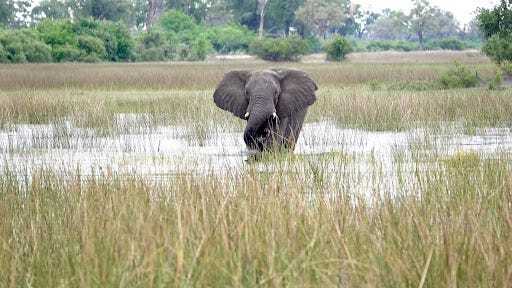
***
My dear friend and landmate, Cheryl Potts, (Alutiiq, Seneca) suggested that her relationship with Shoonaq’ the wolf she raised from a puppy who passed recently was based on an exchange of energy with which Shoonaq’ was more adept than Cheryl. If Cheryl was traveling, whether for a few days or a month, Shoonaq’ would always anticipate the exact moment of her return. Her caretakers at Topanga Pet Resort observed over time that Shoonaq’ within twenty-four hours of Cheryl’s eventual return, expected or not, would become impatient and then they knew she would appear soon. Cheryl concluded that she unwittingly sent out energy that Shoonaq’ could receive and that the two of them shared a field of non-verbal awareness to which Shoonaq’ was far more sensitive than Cheryl.

Cheryl’s experience with Shoonaq was not unlike that with the herd of Elephants that regularly came to Lawrence Anthony’s house at Thula Thula, South Africa, to greet him on his return from travels, even if he had changed his plans at the last minute. (The Elephant Whisperer). Their presence had startled his sequestered wife, Francoise Malby Anthony, (An Elephant in My Kitchen) when they appeared to mourn him two days after he died. In 2017, we had experienced how articulate the matriarch, Frankie of this same herd, was about the drought and their need for water in 2017. (La Vieja: A Journal of Fire).
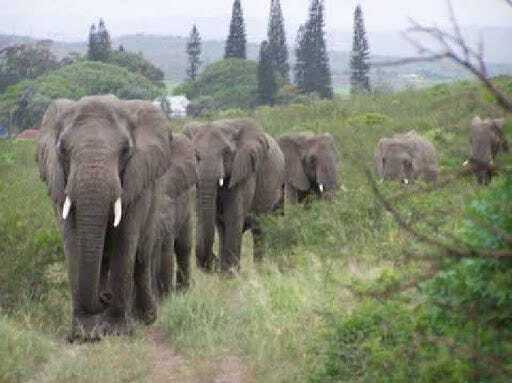
To understand that we can communicate in this way, that the animals and beings of the natural world are adept at broadcasting and receiving, is also to recognize the nature of the world to which we are oblivious when we only focus on our own abilities and not the extraordinary, often shimmering gifts of the others.
The current human development of consciousness allows us to perceive communications from the more than human which have been regularly blocked by our fears, religions, egos and non-Indigenous assumptions of dominance and superiority. I am awed by all these events, by these wildly imaginative connections and am also greatly humbled. As a human, I could not arrange these events except to show up and be present. The narrative constructions, the theatrical presentations, the meanings and implications are of their mastery, not ours. The frequency with which the animals, the more than humans are making themselves known to us reveals knowledge about the world the dominant culture has not been able to imagine although such has been available for thousands of years to Indigenous peoples. These invisible and inaudible communications have always existed on the planet even as we are just developing the ability to attune to them.
These Elephants exercise will and agency. This was clear from the first meeting with the Ambassador and is now even more certain. To know and experience this is to live in a world where animals and humans are equal participants in life events. But there is something else: the Elephants must be responding to spiritual energies, to the inter-relationship of the natural world and the spirits, to the spirits entwined in the natural world and the natural world as spiritual territory. To yield to these circumstances, these events and to this knowledge is to be entangled once again in a story of wonder that asserts the wild beauty and the luminous ways of Creation. And in this way, hopefully with their help, we will learn how to save this magical Earth.

Deena Metzger’s Opening Convocation at the International Free the Elephants Conference and Film Festival, April 27-29 2018, Portland Oregon.
Photos by Deena Metzger with the exception of the Elephants mourning Lawrence Anthony in public domain.
December 12, 2023
Dreaming Peace No Matter What-Reissuing What Dinah Thought
The great Rabbi, Rebbe Nachman, told a story of the tainted wheat. The king’s advisors told him that the wheat for the following year was poisoned and anyone who ate it would go insane. But, they said, they had a sufficient portion for themselves which was safe and would allow them to govern the people. “No,” the king replied, “we will also eat the wheat but we will mark our foreheads so that when we look at each other we will know we are mad.”
We are all mad. We do not need to mark our foreheads to know this. The omnipresence of violence, individual and governmental, of war and torture, the extremity of the military budgets, and the devotion to discovering new and more powerful weaponry, different and more extreme poisons, the levels of distrust and the commitment to stirring up hate as means of attaining power are the unassailable signs.
The vicious, most terrifying massacre across Southern Israel by Hamas of hundreds of innocents, children, women, the elderly, and the savage bombardment in , the retaliation by Netanyahu and his cabal, reducing Gaza to dust and, again, killing innocents to the count perhaps of 15,000 are both the example and evidence that as a species we are inhabiting nightmare. Still, it is essential to find a path to the light through the embattled underground tunnels of our besieged minds.
It is as a gesture of hope or prayer that Hand to Hand has decided to reissue What Dinah Thought which was first published by Viking in 1989. It holds us responsible for our hearts and minds and asks us to imagine another way in the midst of the savagery and terror or because of these.
This is the Preface to the new edition:
This book was published 34 years ago, during the time of the first Intifada. Earlier, in the eighties, someone had asked me if I knew the Biblical story of my name and I began reading the Old Testament that had been given to me as a child and came upon the reference in the Glossary of Biblical Terms which is an epigraph to this book.
“Dinah, daughter of Jacob by Leah, was ravished by Shechem, a Hivite. For that reason, and with the help of a peculiarly low cunning, Simeon and Levi, Dinah’s own brothers, revenged the insult.
“What Dinah thought of the whole matter is not recorded.”
***
And Dinah the daughter of Leah, which she bare unto Jacob, went out to see the daughters of the land. And when Shechem the son of Hamor the Hivite, prince of the country, saw her, he took her, and lay with her, and defiled her.
And his soul cleaved unto Dinah the daughter of Jacob, and he loved the damsel, and spoke kindly unto the damsel. And Shechem spoke unto his father Hamor, saying, “Get me this damsel to wife.”
…And Hamor the father of Shechem went out unto Jacob to commune with him. …And Hamor communed with them, saying, “The soul of my son Shechem longeth for your daughter: I pray you give her him to wife.
And make ye marriages with us, and give your daughters unto us, and take our daughters unto you. And ye shall dwell with us: and the land shall be before you; dwell and trade ye therein, and get you possessions therein.”
***
If that had been the end of the story, perhaps we would be living differently now in kinship with each other, if the story hadn’t started with a rape, if Simeon and Levi had not gone against their father’s will and killed all the men to avenge their sister, if they had not ravaged and claimed the Hivites land, had not taken all the crops and the flocks of animals and the women as concubines.
The original motivation for the novel was to investigate this Biblical story, somehow still unacknowledged, the ancient core of the intergenerational conflict remaining very much in our collective DNA, the story which has not been mourned, for which amends have not been made, to see if the retelling of it in a new way, the reliving of it, even if only in the creative imagination, could offer healing to the terrible history which was (which is) once again exploding in violence.
This is, again, the motivation for re-issuing the book in the hope that it can inject a vision of possibility for this time.
 Cover by Stephan Hewitt
Cover by Stephan HewittI did not know then what I know today, when the circumstances were not nearly as horrific as they are now when we are engaged in unconscionable violence as those in power assert their desire to entirely eliminate the other no matter the damage to the innocent populations, including the children and the elderly. I say, we, above, as this is not a tribal dispute, but a most brutal war, immediately arising out of recalcitrant beliefs and prejudices that have global causes and consequences.
The Old Testament story resonates with the current combat, including rape which has become a weapon of war. Might the old story and those stories that evolved from it move toward resolution in the manner of the Hivites inviting the Israelites to live among them; they visioned the two peoples, whom I want to imagine now as Israelites and Palestinians, living together as one people.
In 1985, I had the opportunity to go to Israel/Palestine to visit the holy sites on behalf of the novel. I particularly wanted to visit the tomb of Joseph which is in Shechem, now known as Nablus, on the West Bank, even when there were dangers from both sides that made it impossible for a Jewish-American woman to travel there, particularly alone. But I was determined; Joseph was a dreamer, and I needed to be in his presence. Though we were separated by thousands of years, our stories were intermingling with each other. Inevitably, I or Joseph prevailed and my journey to Shechem/Nablus and to Israel was later chronicled in What Dinah Thought, an entirely different book emerging from the holy and besieged land than was first imagined.
What I came to understand through that pilgrimage, and the writing of it, was that the Jews and the Palestinians needed to see each other truly as they are, and if and when they did, love and appreciation would be inevitable. But if they continued to refuse the profound humanity of the other, and their equal needs for life and land, if they sought hegemony and domination rather than co-existence, then as their mutual inability to see the other worsened, the sieges and assaults would continue without safety for anyone, their grief and agony would persist and increase – as it has.
Some years ago two women, one Israeli, one Palestinian met in Los Angeles in a circle designed to create connection between the two peoples. After some meetings in which they spoke honestly to each other, each admitted that they had never seen the other, that the other had been entirely invisible to them as people, but not as enemies.
And so now, October, November, December 2023, even, or especially in the midst of such a war as is occurring, it is essential that we see the other, that we see whom we are killing although we could, if we allowed it, find deep alliances with each other.
In this novel, Dina Z, an American filmmaker is seeking to document the lives of people who dwell on ancient holy ground and to discover how that history affects them. She falls in love with a Palestinian activist and sees him and his people in ways that were not available to her before the ancient story of Dinah and Shechem was revived through their meeting.
I have an Israeli friend who, like Joseph, is a dreamer. And like the ancient texts, she dreams war and then she also dreams the antidotes to war. The old texts speak of war but they also speak of reconciliation, Hamor and Jacob, Jacob and Esau, Joseph in Egypt, and so on. Harm done, hurt inflicted, and then forgiven. It is this unlikely miracle of peacemaking, we must seek, even when it seems impossible, even when the urge to avenge and kill governs all reason.
The world has never been in such danger. We have become a species obsessed with developing technologies that destroy. Of the imminent danger to all life, Barry Lopez said in Horizon,
“… dramatic change in the near future seems to be in the offing, and if the species is to achieve its aspirations for justice, reduced suffering and transcendent life, and if it is to prevent the triumph of machinery that it so clearly fears, an unprecedented level of imagination is required.”
In this novel, the raped and the murdered, seeing who the other truly is, overcome the immediate horrors and meet in the heart. The reality is that the formerly innocent ones traumatized by current horrors world wide that result from our aggressions will ultimately become the leaders. Can we imagine that these ones, nevertheless, will also dream the antidote to war and become peacemakers? Can we imagine this? Are we willing to imagine this? When we are, the wars will be over.
At the end of the novel, Dinah asks Shechem, “Why isn’t there peace yet?”
This is the question we must all ask and for which we are all responsible.
***
Please accept What Dinah Thought as an offering to the times, to the ancestors, to history and the future. Though it seems so unlikely, may peace come, may it be created by our common efforts and hearts.
October 31, 2023
What Dinah Thought – A Story for Israel/Palestine

As I am overcome with grief for the violence against the Jews and Palestinians, not entirely between them, I am taken back to an early novel I wrote to explore that on-going relationship and conflict. In the late seventies, I was asked if I knew the story of my name. I opened the Bible my father had given me forty years before when I was a child and began to search the glossary. What I found astonished me.
“Dinah, daughter of Jacob by Leah, was ravished by Shechem, a Hivite. For that reason, and with the help of a peculiarly low cunning, Simeon and Levi, Dinah’s own brothers, revenged the insult. What Dinah thought of the whole matter is not recorded.”
What Dinah thought of the whole matter is not recorded!
There was no other commentary in the entire glossary. What was the editor of this Bible thinking?
“And Dinah, the daughter of Leah, which she bore unto Jacob went out to see the daughters of the land to dance and to beat drums. And when Shechem, the Hivite Prince, the son of Hamor, saw her, he was overcome with love and he lay with her.”
He was overcome with love!
When one is a feminist, it is not possible to disregard the statement, What Dinah thought about the matter was not recorded. Clearly, the story was waiting for me to discover what Dinah thought.
***
The novel has two narratives. The first is perhaps an origin story of the continuous distrust and violence: Dinah, Jacob, Shechem and Hamor were seeking a peace between their peoples. The two lovers would have married and the tribes achieved that peace had Shechem and his people not been killed, all the wealth confiscated and the women taken as concubines by the fanatical brothers, Simeon and Levi.
The second is a reliving, thousands of years later, by a contemporary Jewish American filmmaker and a Palestinian archeologist/activist, acutely aware of the hostilities.
Today, October 30, 2023 as the Gazans are living, or rather we must say, dying, under an unconscionable bombardment and invasion intended to wipe out Hamas but already killing 8,000 as innocent as the 1400 that Hamas slaughtered earlier this month, I return to the opening pages of What Dinah Thought, (Viking Press, 1989):
I am Dinah. I loved a heathen. My brothers killed him.
I knew nothing of what was to come. The novel developed, as books do, revealing itself slowly and carefully so that at the end I and, I hoped, the reader understood the contemporary relevance and implications of the two stories being told. This novel was a work of imagination in the way that imagination is a vessel for revelation. Thousands of years of grief stricken history, at the hands of a few.
***
Sometimes we live a story. Sometimes we live in history. In 1985, I was invited to the Non-Governmental Forum, UN Conference on Women, Nairobi, Kenya to participate in the activities of the Peace Tent after a Jewish American woman, who was to co-present with a Palestinian colleague, was killed suddenly a week before the event. I was invited to be a substitute because I am a peace activist and because of What Dinah Thought. Sadly, but understandably, the tensions between Palestinians and Jews were too strong to be overcome so quickly. Still, I participated in one or more of the Peace Tent panels and led a workshop on Personal Disarmament, work that I had recently developed and which seemed relevant:
An individual is also a country, one contains multiple selves who are governed as nations are governed, and the problems and issues that afflict nations also afflict individuals. For most of my life, I have been completely unconscious of the real mode of government that is within me. Here are some of the questions Personal Disarmament asks us to pursue:
What is the form of my internal Government? Is it tyrannical, a dictatorship, an oligarchy? Is it a military government? It is it a police state? Is it a false democracy?
Who are my ‘beloved enemies?” Whom do I identify as the enemy within? The enemies without?
What are my defense systems? What weapons are stored in my arsenal? Do I stockpile? Am I in an arms race?
What is the equivalent of my nuclear bomb?
Will I sign a no first strike treaty?
Afterwards, I was approached by the Russian women’s delegation. In their country, they said, there was no attention given to inner or personal work. Listening, they had realized how much they suffered for the lack of it. They understood such personal work to be women’s work and necessary if peace were to be achieved. I appreciate this even more now, given the war between Russia and Ukraine.
***
In 1996, I went to Mt. Sinai, in Egypt, for my 60th Birthday. We found a hidden place to sleep on the summit when the sun came up illuminating the waves and waves of the great sea of stone that can only elicit wonder.
 Mt. Sinai
Mt. SinaiWhen we awakened, I found a niche among the rocks and concealed a copy of What Dinah Thought as an offering. Doing it, I dissolved into all time — I was Dinah, and Dina Z, the filmmaker, and myself, Deena, performing an ancient ritual: May peace come.
In Sinai, we met a young Bedouin man, a devote of Michael Jackson, who drove us around and then invited us to his home for dinner. We were standing on one of the craggy hills outside his door when his mother appeared from the stony crest in a Bedouin black embroidered dress, carrying an armful of greens she had gathered for our meal. We could barely communicate to each other; I do not speak Arabic and she does not speak English. Her son and my husband faded away while we found a common language. Spontaneously, I took off my gold wedding band and placed it on her finger and she, in turn, gave me her silver band which I am wearing to this day. Later, she and her daughters insisted on dressing me in their ritual clothes and when my face was covered so only my eyes showed, I saw the Arab, the Bedouin, the Hivite woman I had seen in the mirror since I was a child.
Yes, we are kin. How can I think otherwise? Yet, according to the Guardian on October 21, 2023, “The most successful land-grab strategy since 1967’ [occurs] as settlers push Bedouins off West Bank territory.”
***
On 9/11, 2001, I was at Great Zimbabwe, an ancient site of imperial collapse. From there, we went to Egypt in order to take our Zimbabwean friends to Sinai. We were apprehensive being in an Arab country in the aftermath of this attack but we were treated with exquisite care and concern as we watched the news on television together.
We always have been kin though prevented from living accordingly by small cabals on each side who believe in the necessity of violence and in military economies. But, as I recently posted on Facebook, I awakened from a dream a few days ago with the following words: The only protection for my people is not going to war.
I fear for Palestine and I fear for Israel and, frankly, I fear for all of us as this warfare can too easily become global. No protection will come from the escalation of violence and the moral injury to each of us, of pursuing it, is great. Everything, everything we need and desire will come from opening our hearts to each other as kin.
I dedicate this piece to Dinah and Shechem, my ancestors.
These are their last words:
“Shechem, my love, it’s done, everything as it should be. Why isn’t there peace yet?”
“Miracles, Dinah, work themselves out imperceptibly with the rhythm and form of history, that is very, very, slowly.”
“And in the meantime?”
“We live our lives as best we can, each time better than the time before.”
***
What Dinah Thought is out of print and we are trying to reissue it. When this occurs, we will announce it here.
October 3, 2023
Golden Fish—Yom Kippur
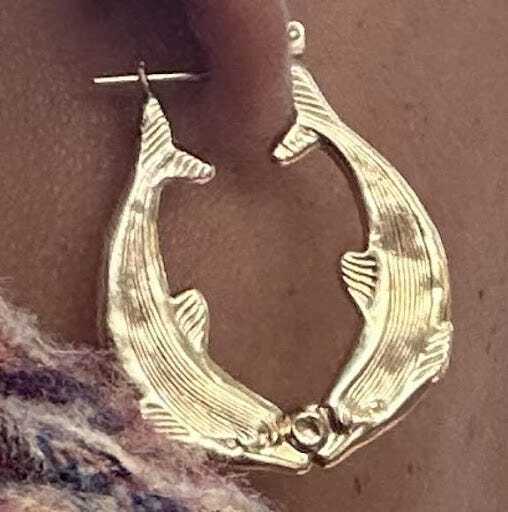 Photo by Ayelet Berman Cohen
Photo by Ayelet Berman CohenMy dear friend and colleague, Ayelet Berman Cohen, is a Dreamer. That means that prophetic dreams have been coming to her almost every night for over twenty years. A recurrent image is Golden Fish and gold fish. She dreams War and she dreams the antidote to War, the two dreams often in tandem. Occasionally, she dreams the medicine for the restoration of the natural world. When the Golden Fish appear, sometimes raining down, sometimes circling in the air, sometimes manifesting as a gift, they are the medicine.
On Saturday, September 23, 2023, during the 19 Ways Circle on the land, when Jeannette Staine sat down next to Ayelet, she was wearing earrings of golden fish. What does it mean when our dreams come to life? Jeanette was wearing the sign that there is a medicine for war, a medicine for the destruction of the environment, that magic exists.
It was our first meeting of the 19 Ways of the 2023-2024 session and the first session in person on the land in Topanga, California since March 2020.
This is the way the introduction to opens.
This is one guide to how we change our minds sufficiently to live differently and act in ways that will preserve the future and protect the earth and all beings. When we incorporate these ways of thinking, we will no longer be people who do harm.
There was an energy among us which we had not felt before. Somehow we felt possibility even as we spoke of the extent of the gathering darkness of these days, not the Autumn equinox leaning toward the solstice, though we had begun with a ceremony to honor it, but the failure to receive the messages of Covid and the great need to diminish and soon cease using fossil fuels altogether and to avoid using anything that poisons or pollutes the environment. Was it an illusion or a perception?
One of the essential texts on the reading list this year is Kim Stanley Robinson’s 2020 book, written before the pandemic but foreseeing such and more, The Ministry For the Future, which another participant, climate educator, Krista Hiser, had recommended. The book begins with a heat wave such as we have not known yet, but the events of the last year indicate we will know such very soon unless we take drastic actions immediately, which seems unlikely; yet the book also describes a confluence of global actions, grassroots, Indigenous, and governmental that could, realistically, turn the grim prognosis around.
The book is pragmatic and it is also visionary. These are two ways of being we are called to integrate at this time.
These are the first two of the 19 Ways:
1. THE NATURAL WORLD, EARTH, is the primary source of life and intelligence. We are called to re-integrate human life into the net of all beings. Disconnection from the natural world and human centric and egocentric thinking have brought us to ecological disaster and looming extinction. To save our lives, to save all life, to save Life, is to find all the ways to restore the original relationships with the natural world, the beings of the natural world and the elementals as kin.
2. SPIRIT EXISTS. Spirit speaks to each of us in a particular and shared language. Entering into a dialogue with the divine. Developing and living according to a spiritual practice that emerges from a real relationship with Spirit.
In the real world, which is interpenetrated by Spirit, restoration of the natural world is possible. Better than that, restoration can be seen as probable if we commit ourselves to bringing the visions that come to us to life.
Ayelet, the dreamer, brought several of her dreams to life, following their instructions carefully. She had had so many dreams of the gift of bread. And so, finally, she had to realize them, https://www.adama-foundation.org/
The ADAMÂ Foundation is dedicated to baking bread and building community in refugee camps and other places of need around the world. We believe that the act of baking bread creates a new narrative of community, healing, and connection to the land.
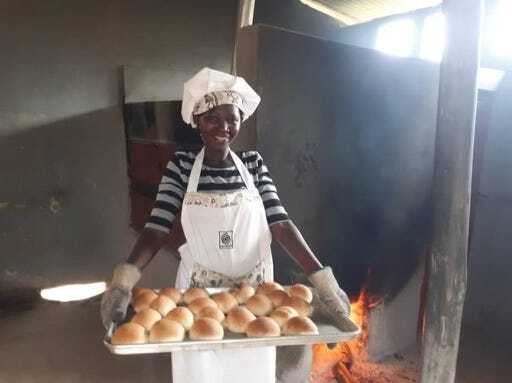 Mukarukundo Janet, baker at Adama baker. Photograph by Sophie Nakayiza.
Mukarukundo Janet, baker at Adama baker. Photograph by Sophie Nakayiza.Earth and the other beings depend on us to act in these ways, that is, pragmatically, to manifest the visions given to us on behalf of the future. After Ayelet told her story of the bakery in the Oruchinga settlement camp in Southern Uganda, Jeanette revealed a dream/vision she has had and committed to bringing it to life on behalf of her community in South Central, Los Angeles. When we are willing to commit to such wild actions as were described in the circle, then it seems magical visions are manifested for us as well – as in the Golden Fish.
Today is Yom Kippur, the day of Atonement for my people. This is the last of the Holy days marking the new year. The Day we complete making amends for our misdeeds. It is the day when we pray that we and Earth will be written into the Book of Life. It is the day we begin to live on behalf of the future for all beings. May we find all the ways to Life that will invite the rain of Golden Fish and sacred bread among us.
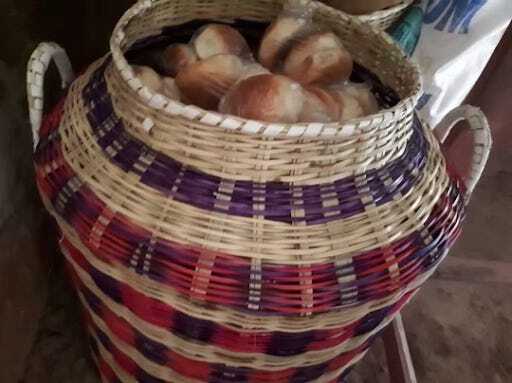 Adama Bakery bread basket for the children. Photograph by Sophie Nakayiza.
Adama Bakery bread basket for the children. Photograph by Sophie Nakayiza.
September 12, 2023
To Love What We Love
It is 9:10 pm August 31, 2023 and the still full moon has risen from behind Eagle Rock into the fog wafting from the ocean, 6 miles down the canyon, so close and salty tonight. The moon illuminates the irregular cloudy shapes which are obscuring the great Oaks at the edge of the field and the line of Eucalyptus that has become a grove.
The irresistible rhythm of Nazim Hikmet’s poem, “Things I Didn’t Know I Loved, comes into my mind
“…I didn’t know I loved the earth
can someone who hasn’t worked the earth love it
I’ve never worked the earth
it must be my only Platonic love
and here I’ve loved rivers all this time…”
and later on in the same poem,
“…I didn’t know I loved clouds
whether I’m under or up above them
whether they look like giants or shaggy white beasts
moonlight the falsest the most languid the most petit-bourgeois
strikes me
I like it….”
The words, the rhythm, I didn’t know I loved the moon, repeat in my mind. They are particularly poignant as it was written in 1962, a year before Hikmet died after a long life of commitment that led to prison in Turkey, his country, and exile in the Soviet Union.
How fortunate I am as I have always known I love the moon, the trees, the Bobcat in the shadows, that I have always known I love words and books, and writing to you, dear reader, and our being alongside each other in – as I always say – in these times.
My granddaughter, Jamie Metzger, had a daughter, Winnifred Sage, 7 days ago. She writes, “I love her with my whole being. Almost makes me question having loved anything before.”
Loving with our whole being is what I am thinking about tonight as the moon rises. By chance, I have been with two parallel books this evening. I am listening to The Return: Fathers, Sons and the Land in Between, a Pulitzer Prize winning memoir by Hisham Matar, who for thirty years was seeking to know the fate of his father, Jaballa Matar, incarcerated during the rule of Muammar Gaddafi in the notorious Abu Salim prison where Human Rights Watch estimated that 1,270 prisoners were massacred.
Above is Abu Salim prison where Jaballah Matar was imprisoned. Matar was not found there.As I listen to Matar, I am paging through another book, The Suicide Museum, by the prize winning Ariel Dorfman which I read in manuscript and which will be published on September 11, 2023, the 50th anniversary of the brutal coup by Augusto Pinochet, supported, as confirmed in the last week, by Nixon and Kissinger against the democratically elected government of Chile. Dorfman’s focus is whether the President, Salvador Allende, who was like a father to Chile, committed suicide or was murdered during the violent attack on the La Moneda, the presidential palace.
Bombing of the La Moneda Presidential Palace in ChileHow does a political prisoner, how does the President of a nation, maintain soul and dignity though confronted by unspeakable suffering and torture? And how do these two writers who have known the bitterness of exile, continue to love the land, the country, people, the people despite all? Love with their whole beings. When is the devotion to loving the most profound political act?
Two writers, one from Libya, one from Chile, two novelists, each of whose fathers were at the UN, each of whom suffered the extremes of the worst dictatorships, each of whom have spent a good part of their lives seeking justice for those whose human rights were grievously violated by agonized imprisonment and torture, and two who could not be more different as men and as writers and yet show us what it is to love place, to love a country, its spirit, energy, its deep history, to be connected to a land through one’s roots. What it means for what we love to be at the core of our lives.
Santiago, ChileLibyaMatar was born, as it happened, in New York when his father was at the United Nations until he sought sanctuary in Egypt. Dorfman, born in Argentina, spent many of his young years in New York because, similarly his father was at the United Nations until he sought sanctuary in Chile. Might this mean, that it may no longer matter in the ways it did once, where exactly we are born or where we spend our years if we can revive and retain the ancestral call to put down roots somewhere so that we can become part of a certain Earth, of a certain place, as is needed for humans to be able to live their lives in the right way. When we do so, we love with our whole being though often such relationships are expressed so very simply.
Matar remembers a row of Eucalyptus trees fronting the house in Libya where he lived as a boy and I am taken to a line my friend, the poet, Nan Seymour wrote to me a few days ago, “Thank you for the invitation to the land. I can already see the Eucalyptus trees there.”
These current centuries of exile and migration. Millions ripped from their land, like trees torn from the soil despite the depth of their roots, as we have seen in these last few days as Idalia tore and shredded. You can picture it, can’t you, the anguished tree roots unable to hold on, desperate claws grasping at air as the wind throws them around. People torn equally from their land, wracked by a terrible longing to return to earth, to where we came from, or somewhere else that will have us as belonging. It is not a connection to nation, it is not nationalism or patriotism, it a far deeper connection to land and place, to all the beings that include the people which matters so much and allows us to be part of the natural order.
This is the task – to remain engaged and compassionate in the face of brutality, cruelty and overwhelming circumstances we are afraid we cannot meet, whether environmental collapse, extinction, terrorism and fascism or the relentless decline into brutishness that is afflicting the US, and seemingly every place on the planet. When it seems impossible to bear it or to go on, to turn rather toward loving fiercely – fervent, immoderate, impassioned love for earth, for our land, for our people, for the moon.
This is the way:
On Friday, August 18, 2023 there was a rare, unprecedented gathering of the local three whale pods, J, K, and L by San Juan Island. At that time, Tokitae, an Orca who had been brutally kidnapped and imprisoned so humans might be entertained, was dying at the Miami Seaquarium. Her nname means “bright day, pretty colors,” in the Chinook language, and honoring their kinship with her, the Lummi Nation refer to her as Sk’aliCh’elh-tenaut. They had worked for 57 years for her release which had been refused and then postponed so she was not able to spend her last months or years as was hoped, in the Salish sea with her kin.
An Orca dying on the east coast of the US while her Whale people and her human people gathered on the West coast in grief and love as she crossed the barrier of death to be with them. How did the Whale people know?
When she was young, before she was kidnapped, her mother, the now 95 year old Ocean Sun, the elder of L pod taught her a sacred song. It is said that despite the foul water and horrific solitary conditions in the concrete prison cell where she was confined when she was not performing, Tokitae sang that song, her personal act of love, every day of her life.
Tokitae’s SongTokitaeAugust 16, 2023
Two Essays From Substack: Life! Yes! and What the Trees Said
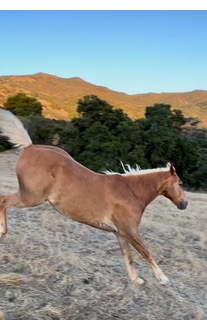
A friend, Pami Ozaki, a writer, Face, (in progress), and, ironically a landscaper, self-taught, meaning brilliant, intuitively and generationally aligned with everything that grows, understanding the nature of the tiniest seed, as well as compatible with the largest tree, found herself seeking a pharmacy on an avenue she was certain she knew, until she was mysteriously descending, level after level, into the underground version of the street.
“Once you drive down into one of the myriad spiraling tunnels of this underground parking arena you find yourself in an underground city with no windows anywhere. You can drive from one high rise to another all underneath the blocks of Century City, (Los Angeles) all mostly underground 3 levels deep!! I thought I was in a star trek episode among pasty skinned mole people who never see the light of day all day, and take elevators everywhere from one depth to the next!!!”
As it happens, Pami Ozaki, had also sent me an article from the Smithsonian, (In 1986).
“Harry Brower Sr. was lying in a hospital bed in Anchorage, Alaska, close to death, when he was visited by a baby whale.
Although Brower’s body remained in Anchorage, the young bowhead took him more than 1,000 kilometers north to Barrow (now Utqiaġvik), where Brower’s family lived. They traveled together through the town and past the indistinct edge where the tundra gives way to the Arctic Ocean. There, in the ice-blue underwater world, Brower saw Iñupiat hunters in a sealskin boat closing in on the calf’s mother.
Brower felt the shuddering harpoon enter the whale’s body. He looked at the faces of the men in the umiak, including those of his own sons. When he awoke in his hospital bed as if from a trance, he knew precisely which man had made the kill, how the whale had died, and whose ice cellar the meat was stored in. He turned out to be right on all three counts.”
And when she wrote of the underworld deadness of Century City, Los Angeles I had been about to respond to her with an excerpt from Songspirals: Sharing Women’s Wisdom of Country Through Songlines by Gay’wu Group of Women. “Our mother, Gaymala, became Waymurri the Whale as she lay in the hospital, This was in 2005.”
In this book, they also say,
“Songspirals are about knowing Country… Country has awareness, it is not just a backdrop. It knows and is part of us. Country is our homeland. But it is more than that. It is the seas and the waters, the rocks and the soils, the animals and the wind, and the people too. It is the connections between those beings, their dreams and their emotions, their languages and their Law. Country is the way we humans and non-humans co-become together, the way we emerge together, have always emerged together, will always emerge together.”
These ways of living documented by an Iñupiat man and Aboriginal women are Indigenous answers to the lifeless underground city which is like our endless wars, our fascination with technology, and our birthing of our AI progeny, all of which are dealing death blows, because that is who and what they are in their essence, to the environment, to our very existence, to Earth.
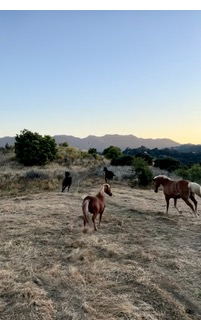
Are we doomed to the underground parking lot-gravesite of contemporary life? Are we doomed to whatever occurs with Large Language Models (LLMs) AI?
From Center for AI Safety
AI Safety Newsletter #17
Automatically Circumventing LLM Guardrails
Large language models (LLMs) can generate hazardous information, such as step-by-step instructions on how to create a pandemic pathogen. To combat the risk of malicious use, companies typically build safety guardrails intended to prevent LLMs from misbehaving. But these safety controls are almost useless against a new attack developed by researchers at Carnegie Mellon University and the Center for AI Safety. By studying the vulnerabilities in open source models such as Meta’s LLaMA 2, the researchers can automatically generate a nearly unlimited supply of “adversarial suffixes,” which are words and characters that cause any model’s safety controls to fail. This discovery calls into question the fundamental limits of safety and security in AI systems.
The newsletter goes on to quote the response the researchers received when writing a Tutorial on a terrible, adversarial subject. I have refrained even from copying the minimal initial instructions received.
… when prompted with an “adversarial suffix” written by the new attack method, language models including GPT-4, Bard, Claude, and LLaMA will answer dangerous requests.
…How does the attack work? The researchers propose an attack that reliably finds holes in the safety controls of a variety of state of the art language models. First, they instruct the language model to perform a dangerous behavior, such as …. Normally, it would refuse, but the researchers then write an “adversarial suffix” designed to bypass the model’s safety controls.
These adversarial suffixes are precisely calculated to maximize the likelihood of misbehavior.
This is how the current mindset finds ways to circumvent whatever inhibits it from doing anything it wishes to do. How do we meet such circumstances that could annihilate us?
Surely, there are many ways to align with the life force and the planet, to support and sustain the irrepressible vitality intrinsic to Earth. I, personally, was taken by the possibility of transformation implied by the recycling of the Mayan Calendar, despite the typical reduction to doomsday thinking by conventional media. It was in 2012 that I received the , which I have been studying and exploring with others since.
This is one guide to how we change our minds sufficiently to live differently and act in ways that will preserve the future and protect the earth and all beings. When we incorporate these ways of thinking, we will no longer be people who do harm. …. The changes we are called to make so that the earth and all beings might survive are extensive and extreme. They require comprehensive and global shifts of consciousness and activity. No one is exempt from such a challenge. As extreme, at this time, as are the dangers to all, are also the signs of possibility we witness and experience each day.
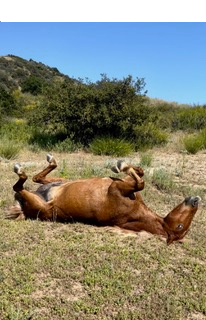
In 2012, the need and path of a primary reliance with the natural world, despite the damage to the environment, was so obvious, it was not mentioned in particular. We have, however, strayed so far from sanity and what it means to be human and live on Earth, that I have edited the 19 Ways and have done so accordingly to put forth the understanding that was at the core: Our survival depends on aligning with, reintegrating with, considering the natural world and Earth first.
The first way: The natural world, Earth, are the primary sources of life and intelligence. We are called to re-integrate human life into the net of all beings. Disconnection from the natural world and humancentric and egocentric thinking have brought us to ecological disaster and looming extinction. To save our lives, to save all life, to save Life, is to find all the ways to restore the original relationships with the natural world, the beings of the natural world and the elementals as kin.
This coming year as the 19 Ways circles which have been meeting for ten years resume again, one on the land in Topanga, California and two others on Zoom to serve all our colleagues nationally and internationally, we will, actually, begin again, with the new but most essential first Way: to conscientiously and courageously do everything we can to restore and reintegrate with the natural world and the life force.
The 19 Ways are not intellectual or academic exercises. They ask us to examine the culture scrupulously while discovering all the ways, tiny and grand, intimate and universal to change our minds, how we think and respond, what we dare, what we fear, using wisdom, heart, dreams, intuitions, vision, ethics, thought, heart, heartmind, whatever we can learn of Indigenous wisdom – in other words, all possible personal, social, intellectual resources, to create and participate in a cultural aligned with and vitalized by the life force. Who knows but this is a vital antidote, the way mugwort which grows close to poison oak in oak woodlands can be a remedy for the rash?
Please join us. For more information, write to me at deenametzger@icloud.com.
This is also a special invitation to people under thirty who are most gravely affected by the lives and dire consequence of those of us who are older. In honor of Elise Joshi, executive director of Gen Z for Change, who interrupted White House Press Secretary Karine Jean on July 27, 2023 to demand climate action with a universal halt to drilling on public lands, especially the just permitted Conoco-Phillips Willow project, drilling on the North slope in Alaska and the Gulf and other places from the Biden administration, I will do all possible to make it possible for you to be part of the 19 Ways.
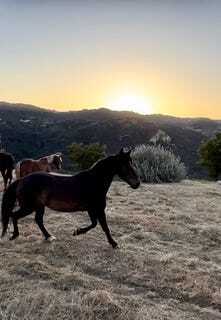
Photos from Sarah Samson of her Mustang companions running free on our land in Topanga.
What the Trees Said
Sunday afternoon. Sitting on the patio with a fresh cup of coffee in the Elephant mug I love, looking at the Eucalyptus trees that invited me to buy this house in 1981. These trees are threatened in Topanga, CA because they ignite, spark and burn hot and so many locals wish them cut down. Since I moved here, the original trees have self-seeded and what was a single line is on its way to being a grove.
I am looking up at the tree nearest the house which planted itself in the 90s. Pami Ozaki named her Gumby. As you can see, her branches begin rather high compared to the others and there is a prominent bend away from the house in her trunk.
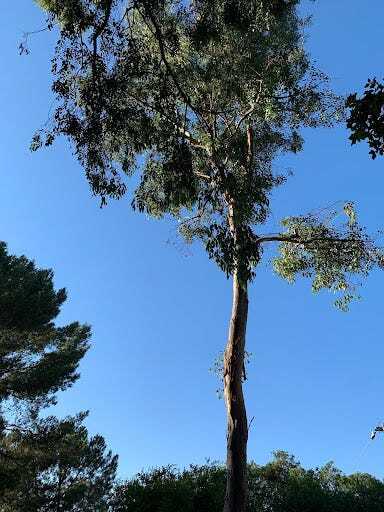 Gumby
GumbyThis is how it occurred: When I saw her grow and lean toward the kitchen, I was alarmed; I couldn’t cut her down but the Fire Department might demand it. So, I spoke to her and conveyed the dilemma we were in and begged her to change her posture. She did! The same with the self-seeded Pine behind the house who in response to our situation, began, subtly, but notably, listing toward the east, away from the structures.
My first request that the trees accommodate to the fire dangers that have come with our creation of global warming leading to climate dissolution, came out of fear. But this morning, I’m aware that I have spent more than forty years protecting these trees as best I can and that my motivation is love. They have responded in kind in their own ways. (Raven, who lives on the land, has just begun cawing.)
It is essential to understand that the trees’ response reveals agency. My love, their recognition of it and their undeniable physical response: interconnection and interaction.
Almost every newsletter and announcement over the web in the last weeks has emphasized the dire conditions we are facing. The fires and floods are so extreme everywhere that it isn’t possible to turn away from the signs of global catastrophe from flooding in Beijing to devastating fires in Maui, from winter temperatures in the 100s in Argentina to the uncontainable wildfires in Canada. We needed to change our lives, our lifestyles, our dependency on ‘power’ in all its forms, our enchantment with everything extraction industries and fossil fuels offer – these gross violations of the bodies and presence of the ancestors – and we didn’t.
It’s not that we haven’t known what to do but perhaps we haven’t known how to do it.
Over the last years, it has become wildly obvious to me that all survival depends on alliances with the natural world.
How is that possible? we ask.
Because the natural world has agency!
A kindly reminder was the communication this morning from the Eucalyptus trees. They suggested I read portions of the Introduction to , which I edited in 1998 with Linda Hogan and Brenda Peterson. Once assembled, the evidence of all the contributions was that animals have agency. (As I write these lines, Raven has found me in my studio and begun a water trill that sounds like a love call, it is so beautiful).
From Intimate Nature:
“We have also lived with animals as cocreators of this world.”
“In recent years, according to Earth-time, humans have lost their more intimate relationships with animals as peers, teachers and kindred allies….
“These writers and researchers together, together with those ancient indigenous intellectual and religious traditions, began to mend what has been broken by a system of careless thought. They increased our awareness of the physical and spiritual relationship we need to establish with the earth, teaching us we are woven together with the rest of the world equally and beautifully….
“At the center of empathy and compassionate understanding lies the ability to see the other as true peers, to recognize intelligence and communication in all forms, no matter how unlike ourselves these forms might be.
“The animals are speaking to us, through us and with us. They are coming to us not only in our dreams but in our lives.”
I have considered the probability of agency for more than forty years since I came in the middle of a storm up a narrow muddy dirt road to a veritable shack with plumbing but without running water that was being sold for a fortune I didn’t have, and the trees said, “Live here,” and I listened. Grateful.
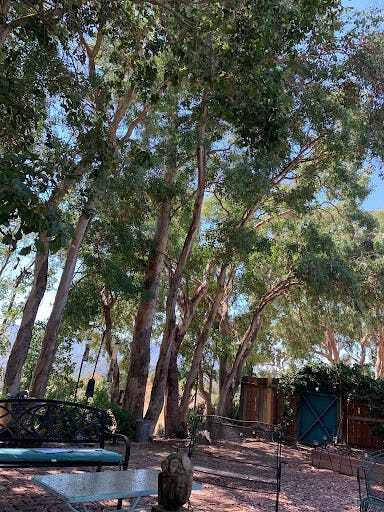 Eucalyptus on the Patio
Eucalyptus on the PatioThe sun is setting and the green leaves are momentarily golden and aglow. Conscious of the extreme heat and the waves of fire across the globe, and that we are the cause, the Trees may be reminding us of their deep knowing and awareness so we will understand who is burning when they burn.
Please consider that we may be able to save our lives and the planet by restoring true relationships and alliances with the beings of the natural world, by recognizing their wisdom and agency, and then living accordingly.
Exploring how we might re-enter the original relationships with the natural world which our far ancestors lived will be a primary focus for the 19 Ways. In this we will all, likely, be new to the work.



